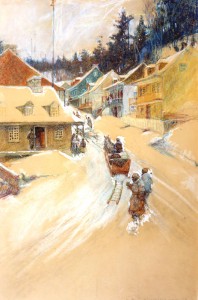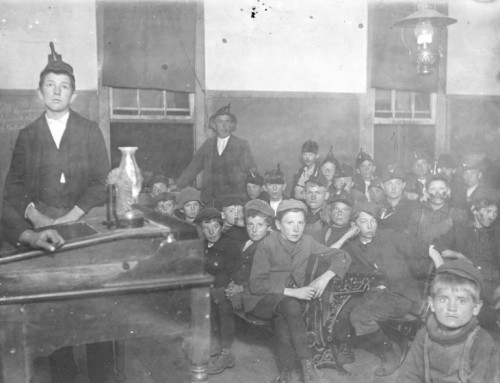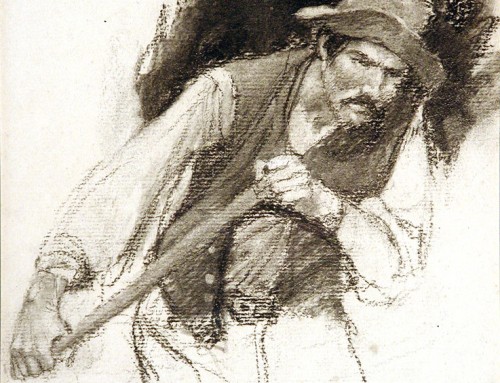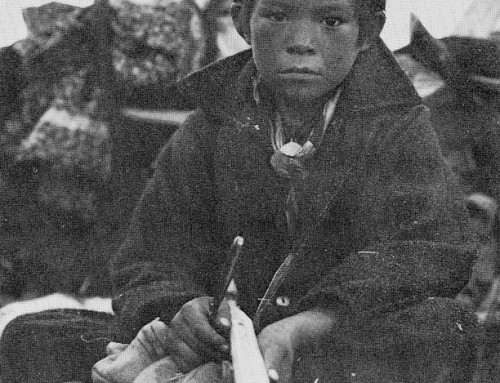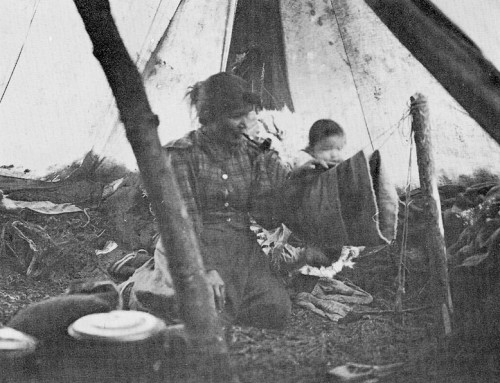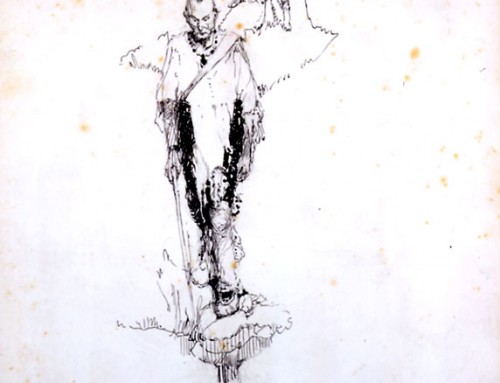| 194 |
| Cap Rouge Hill |
| FES Title: | Cap Rouge Hill | |
| Alternate Titles: | The Edge of the Wilderness (1912, 1913, 1975); Leaving Cap Rouge for the Post at Pointe Bleue (1921, 1931); Cap Rouge – Canada |
|
| Date: | 1903 | |
| Size: | 17.25″H x 11.25″W | |
| Medium: | ||
| Type: | illustration | |
| Published: | Schoonover, Frank E. “The Edge of the Wilderness.” Scribner’s Magazine. April 1905: 443. caption: The Edge of the Wilderness Schoonover, Frank E. The Edge of the Wilderness, edited by Cortlandt Schoonover. Toronto, Methuen, 1974: 105, jacket. |
|
| Inscription: | lr: F.E. Schoonover | |
| Annotations: | en verso on paper label: #194 Cap Rouge Canada / Done from a window in Pedard’s home / “Edge of the Wilderness” 1905 Scribners Dec. 4 1903 | |
| Exhibitions: | 1911 New York; 1912 Albright; 1913 North Congregational; 1921 WSFA; 1931 FES; 1934 Wesleyan; 1962 FES; 1968 Clubhouse; 1969 FES; 1975 BRM Winter; 1977 FES | |
| Comments: | TP 6/19/03; form 6/19/03; non-trany 4×5; index; edit |
|
| Commentary: | During the winter of 1903-1904, Schoonover took an extended trip to the Hudson Bay area of Canada, traveling 1,200 miles by dogsled with his guide, Xavier Gill. This is the first of twenty six numbered drawings and sketches executed during that trip. Most were rendered in oil crayon and were recorded on a separate list which he incorporated into the day books later.
The artist writes: “Such sketches, made in the open, have been of very great value to me in all my painting. I was busy making sketches all the time. Before going into this sub-arctic country, I had been told that it would be impossible to sketch in the mid-winter woods. But I overcame that difficulty by inventing a small sketching tent…The Indians called this sketching tent the ‘Wabeno’ because it looked like the little devil house in which their medicine men perform their incantations.” (Edge of the Wilderness, 133) These drawings and later illustrations made from them are still used by researchers to document the history of the Hudson Bay’s early inhabitants. Schoonover used the knowledge that he acquired on that trip to render hundreds of illustrations for magazine stories and books about life in the Canadian north country. The year after he returned from his journey, he wrote the article, “Breaking Trail,” for Scribner’s Magazine in which he recounted some of his experiences. To illustrate the text, he used drawings that he had made during the trip (diaries). Day book numbers 194-219 were found on a list among his Canadian papers. These numbers were not entered by him in his day book record except as a group listing entitled “drawings done in Canada.” (day books) This painting was made into a print in the 1970’s.
|
|
| Provenance: | Artist; Helen L. Card, Latendorf Bookshop, New York [1962]; Clubhouse Gallery, Media, Pennsylvania [1968]; sold by artist to Mrs. Edwin Hineman, Sr. (after 1969); Collection of Edwin S. Hineman, III | |


